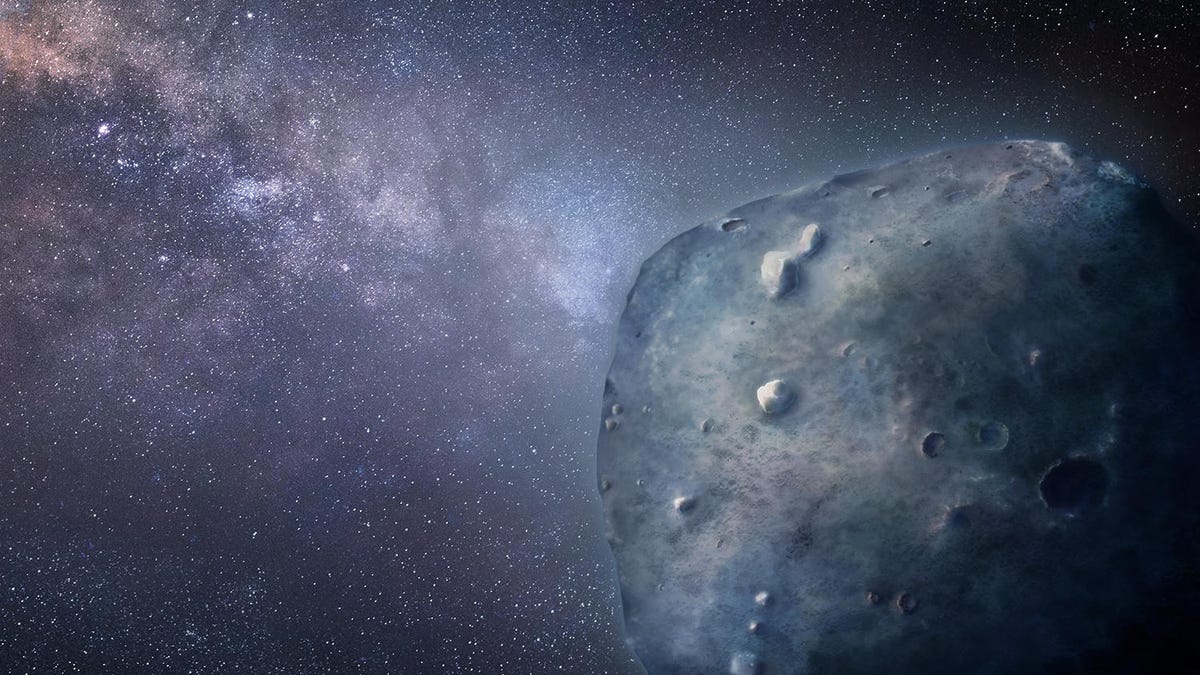An asteroid has a very tiny chance of hitting Earth this year
It's nothing to lose sleep over, but the odds a big space rock could hit us soon are (slightly) higher than zero.

An artistic impression of a potentially hazardous asteroid.
An asteroid up to double the width of the bolide that exploded in the atmosphere over Russia in 2013 is making a close approach of our planet this September, and there's a teeny tiny chance it could make an even bigger impact.
But it almost certainly won't. Asteroid 2006 QV89 currently has a one in 7,000 chance of hitting Earth on the morning of Sept. 9, according to the European Space Agency, which lists the space rock as the fourth most concerning object on its top 10 list of cosmic items with a non-zero chance of hitting us.
Current modeling of the asteroid's orbit shows it more likely passing by Earth at a distance of over 4.2 million miles (6.8 million km) this September, but ESA says there's a roughly one hundredth of 1% chance the model is way off and it hits our planet instead.
At a diameter of up to 164 feet (50 meters), it could be the sort of meteoroid impact we only see every few decades, and the NASA administrator recently noted that we're due for a few more of the sort this century.
To better estimate the odds that 2006 QV89 could give us trouble, ESA has been remeasuring images of it from over a decade ago, but the new assessment has yet to change the chance of impact much.
Then again, recent history has shown us that sometimes the most dangerous asteroids are the ones we haven't yet spotted. For example, the bolide that blew out thousands of windows in Russia six years ago came from behind the shadow of the sun and wasn't seen by astronomers until it was already colliding with our atmosphere.

